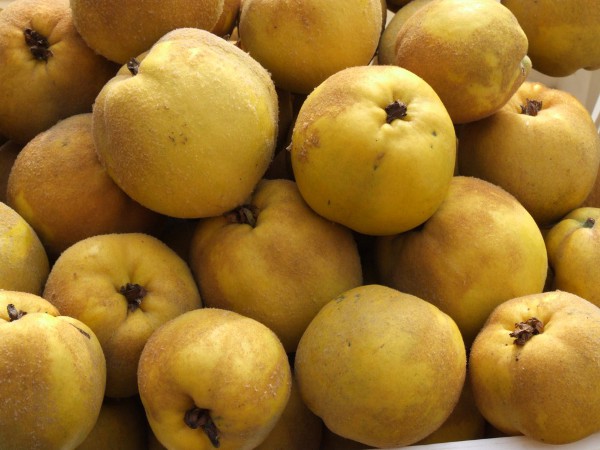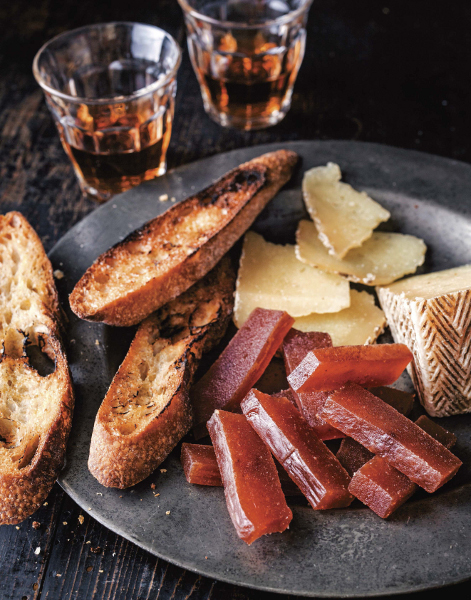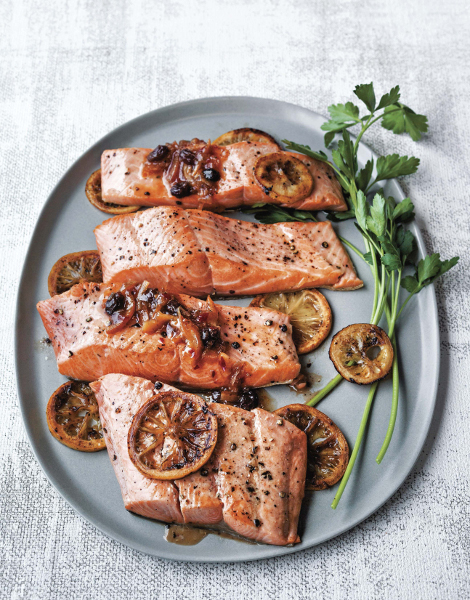
reprinted with permission from Jam Session, copyright 2018 by Joyce Goldstein.
Published by Ten Speed Press, an imprint of Penguin Random House LLC
Photography copyright Ed Anderson
.
If you have any comments, observations, or questions about what you read here, remember you can always Contact Me
All content included on this site such as text, graphics and images is protected by U.S and international copyright law.
The compilation of all content on this site is the exclusive property of the site copyright holder.
Jam Session, a book review
Thursday, 15 November 2018
Before eating seasonally became trendy it was simply the way things were. Some sturdy produce could be stored through the winter in a root cellar: apples and carrots, onions and winter squash, potatoes and cabbages. Anything more tender, more fragile, would be canned using sugar to preserve it, or pickled with vinegar. With the advent of refrigerators and cross-country shipping the necessity for putting food by fell by the wayside. Strawberries in December, avocados from Mexico, bananas year-round, If grape jelly is wanted for a peanut butter and jelly sandwich, go out and buy it at the store.
Making sweet preserves, a technique intended to preserve food, is now itself something to be preserved. And this is where

reprinted with permission from Jam Session, copyright 2018 by Joyce Goldstein.
Published by Ten Speed Press, an imprint of Penguin Random House LLC
Photography copyright Ed Anderson
Jam Session, a book by Joyce Goldstein, provides the reasons and recipes,
methods and techniques to create superbly delicious preserves of your own.
Why bother, when you can go to the store or look online and just buy a diversity of fruity, rich preserves. No fuss, no muss, no bother. Take a minute to read labels and stare at all the chemicals. Look at the percentages - heavily, excessively sugared with the further addition of high fructose corn syrup. And then think about the tweaks and variations that Jam Sessions offers up, to, as Joyce Goldstein says, change a plain chicken breast to something elegant with a spoonful of chutney or mostada. Moreover, you are putting something of yourself into each jar. Give a jar of something store-bought and the underwhelmed recipient will mumble a thank you. A jar of something from your kitchen inspires an entirely different response.
Jam Session begins with a primer about fruit preserving: simple descriptions of the different kinds of preserves from familiar jam, jelly, fruit butter, and marmalade to condiments, conserves, and mostarda. There are authoritative explanations about using sugar, substitution some honey or agave syrup (and the reduced storage life that results), what different fruits bring to the preserving kettle in the way of high or low pectin, high to low acid, and what this means for your preserving. Preserving techniques. Labels. Storage. Sounds like a lot, and it is, but lucidly explained in a concise way.
And then - after you've been to the farmer's market, the U-pick, or the store -
it is time to get into the kitchen and make some preserves.
Recipes and their directions are organized by seasons: Spring - late March to late June; Summer - late June through early September; Fall - mid-September through mid-November; Winter - late November through March.
Recipes are sequenced with a basic version first, then enhanced versions. Basic blackberry jam, for example, with a variation that suggests adding small diced nectarines to add flavor and texture. Then there's blackberry bramble jam with orange zest and fresh squeezed juice, lemons, ground cloves, and bay leaves. Or, blackberry, burgundy plum, mint and black pepper jam. Are you beginning to get the idea that these are not the plain and ordinary preserves found at your typical grocery store? I hope so.
Now it is mid-November so let's see what recipes are on offer.
Pears, of course, and apples. Recipes for making your own apple pectin, pear or apple butter, pear or apple chutney, rosemary pickled and spiced pears. Beautiful full page color images (try not to drool on the pages . . . ) And then

image courtesy Brian Whyer
Quince, one of my favorite autumnal fruits. If only they were easier to find. Understand that the book is more than merely recipes. There's a lovely two-page explication about quinces, their characteristics, preping and cooking them. Of course there are recipes - basic quince preserves, quince and honey butter, quince jam with rose and cardamom, sliced preserved quinces with Moroccan flavors, a conserve of quince, pear, and nuts. And

reprinted with permission from Jam Session, copyright 2018 by Joyce Goldstein.
Published by Ten Speed Press, an imprint of Penguin Random House LLC
Photography copyright Ed Anderson
truly exquisite membrillo, a quince paste traditionally served with Manchego cheese.
I'm writing this review in mid-November. Thanksgiving is early this year, coming up very soon. Halloween may be pumpkin central, but that's for Jack O'Lanterns. Thanksgiving is for their consumption. Paging ahead for Winter, late November through March

reprinted with permission from Jam Session, copyright 2018 by Joyce Goldstein.
Published by Ten Speed Press, an imprint of Penguin Random House LLC
Photography copyright Ed Anderson
and consider these options and possibilities with three recipes for pumpkins and winter squash: roasted pumpkin butter, which she suggests enjoying on toast, pancakes, or in place of canned pumpkin for a pie filling. Mediterranean style pumpkin preserves that are similar to spoon sweets, from Turkey or Greece. But we might spoon it over rice pudding or ice cream. And a special riff on that traditional holiday pumpkin pie, with cabello de angel, a Spanish preserve made with grated winter squash preserve to be used as a pie or tart filling.
Late fall and winter are also the seasons for citrus. Citrus is synonymous with marmalade (even though marmalade was originally a quince preserve.) Recipes abound for basic marmalade and embellished variations, lime marmalade, satsuma mandarin marmalade, and more. Moroccan preserved lemons.

reprinted with permission from Jam Session, copyright 2018 by Joyce Goldstein.
Published by Ten Speed Press, an imprint of Penguin Random House LLC
Photography copyright Ed Anderson
Look here to purchase a copy of your own.
And a Meyer lemon chutney that's described as a cross between an Indian lemon pickle and a marmalade, described as especially good with fish and seafood, shrimp curry, curried lentils, and also delicious with roast chicken. Or turkey. Sounds like an option for next week's feast. Fortunately there is a work-around using standard lemons if the Meyer are not available.
A lovely book for the cook and the gardener, with recipes to embellish their pantries, and options for their menus.
Published by Lorena Jones Books, an imprint of Ten Speed Press
Hard cover, $24.99
A review copy of this book was provided by the publisher.
Back to Top
Back to Book Reviews 2018
Back to November 2018
Back to the main Diary Page